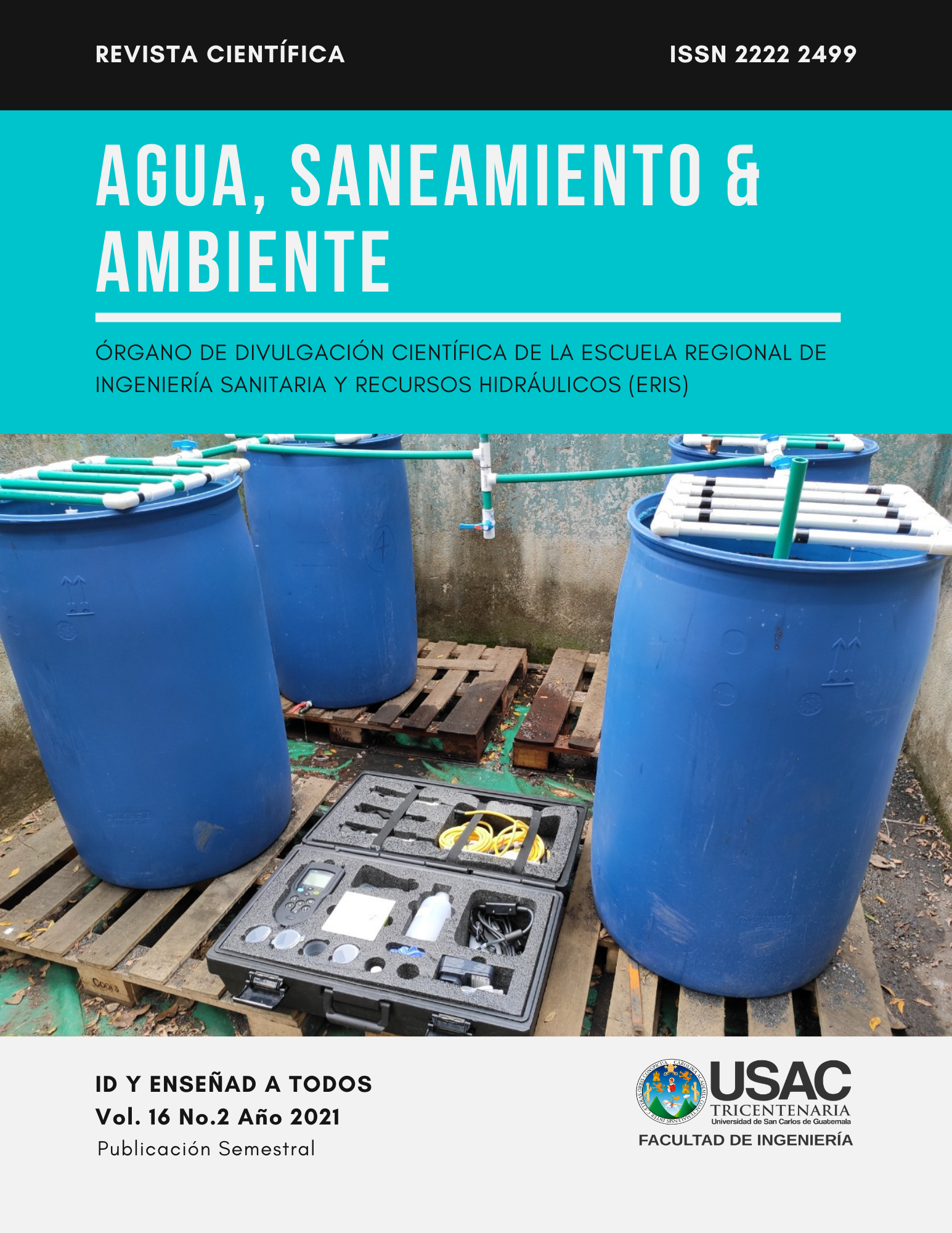Quality of the residual water produced in the different stages of the wet coffee milling process
DOI:
https://doi.org/10.36829/08ASA.v16i2.1324Keywords:
Biodegradability, reuse, despoiled, fermented, washed, recirculatedAbstract
Due to the water stress that one goes through, thinking about the fact of reusing wastewater is imperative. This study characterized and valued the residual water generated in the wet beneficiation process. It was sampled in one of the coffee exporting mills in the community of La Libertad in the municipality of La Democracia in the department of Huehuetenango, Guatemala. The objective was to determine its quality and the appropriate treatment for its reuse. The results were compared with the values recommended in Governing Agreement 236-2006 of the Ministry of the Environment of the Republic of Guatemala. Determining that they are not suitable to be discharged to receiving bodies. For which all must be treated. Additionally, biodegradability was analyzed, obtaining as a result that all of them can be treated by biological methods. It was determined that wastewater from pulping and washing potentially has added value if used in crop irrigation due to its high concentration of nutrients. The pulping wastewater has 12 mg / L and 53 mg / L of total phosphorus and total nitrogen respectively. And the recycle wash wastewater has 3308 mg / L total phosphorus and 117 mg / L total nitrogen.
Downloads
References
Ardila, A., Reyes, J., & Arriola, E. (2012). Remociòn Fotocatalítica de DQO, DQO y COT de efluentes de la industria farmacéutica. Revista Politécnica, 9 - 17.
CONAGUA. (2013). Ley Federal de Derechos. Disposiciones aplicables en materia de aguas nacionales. . Ciudad de México: Comisión Nacional del Agua. Ley. Tlalpan.
Much, Z. (2018). Manual de Química y Microbiología Sanitaria. Guatemala: ERIS, Universidad de San Carlos de Guatemala.
Sadeghian, S. (2008). Fertilidad del suelo y nutrición del café en Colombia. Chinchiná: CENICAFE.
Silva, J., Torres, P., & Madera, C. (2008). Reuso de aguas residuales domésticas en agricultura. Agronomía Colombiana, vol. 26 no.2.
Zamora, F., Rodríguez, N., Torres, D., & Yendis, H. (2008). Efecto del riego con aguas residuales sobre propiedades químicas de suelo de la planicie de Coro, estado Falcón. Bioagro, 193 -199.
Downloads
Published
How to Cite
Issue
Section
License

This work is licensed under a Creative Commons Attribution-NonCommercial-ShareAlike 4.0 International License.







